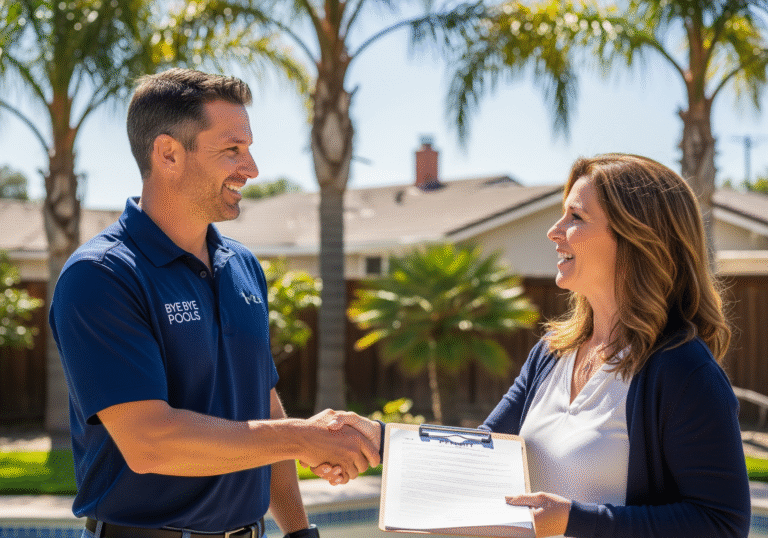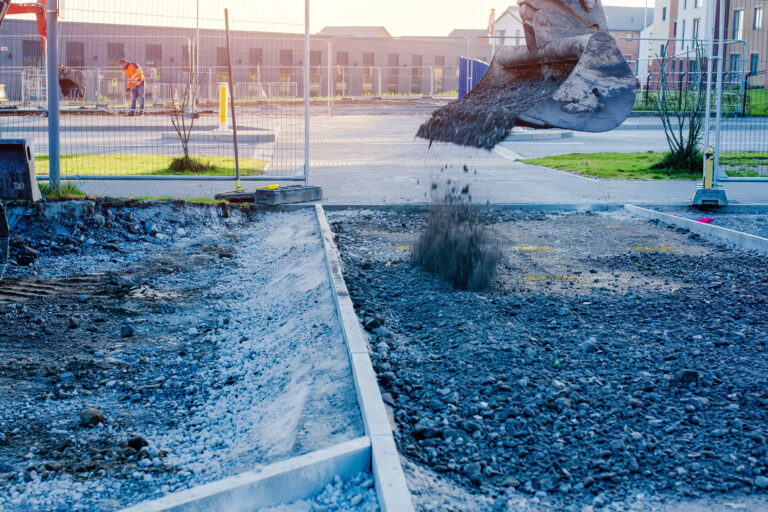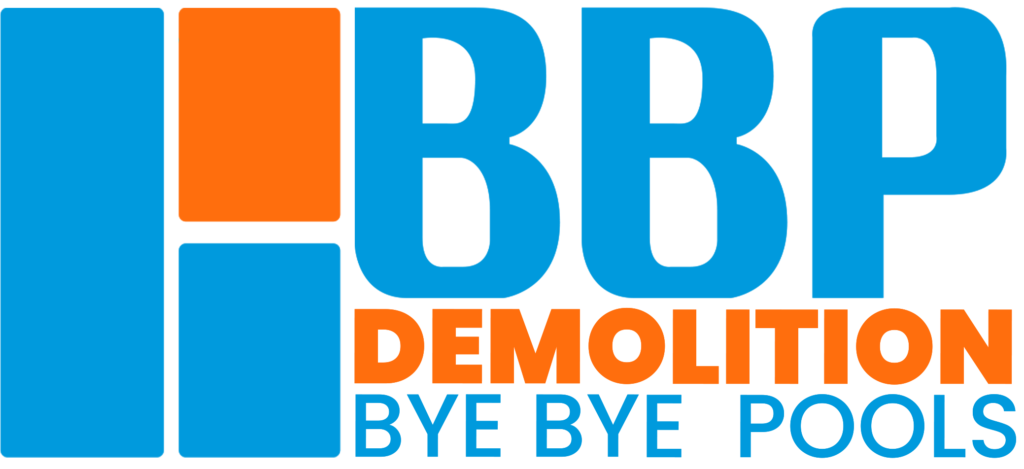Smart Choice: Ultimate Inground Pool Removal Cost Guide 2025
Are you tired of skyrocketing pool maintenance bills, constant repairs, or simply the wasted space an unused swimming pool occupies? You’re not alone. Thousands of homeowners across the U.S. annually consider removing their inground pools, but the question that often comes first is: “What’s the actual inground pool removal cost?” Understanding the financial investment involved is key to planning your backyard transformation. This comprehensive Inground Pool Removal Cost Guide 2025 will break down all the factors that influence pricing, from the type of pool to local regulations, giving you a clear picture of what to expect. Ready to demystify the costs and take the first step toward reclaiming your backyard? Let’s dive into the numbers!
Why Invest in Inground Pool Removal?
Before we detail the inground pool removal cost, it’s helpful to understand the compelling reasons homeowners choose this significant home improvement project. Beyond the initial expense, removing an unwanted pool can lead to substantial long-term savings and increased property value.
Escaping Maintenance Money Pits
Pool ownership comes with relentless recurring costs: chemicals, cleaning services, pump electricity, water top-offs, and frequent repairs. These expenses can easily amount to thousands of dollars annually. For many, the long-term inground pool removal cost is quickly recouped by eliminating these ongoing drains on their budget.
Reclaiming Valuable Backyard Space
An average 18×36 foot inground pool, plus its surrounding deck, can occupy a huge portion of a typical backyard. Removing it unlocks a vast canvas for creating new amenities, like a lush garden, expansive patio, or even an Accessory Dwelling Unit (ADU). The space gained is invaluable, far outweighing the inground pool removal cost for many.
Boosting Property Appeal and Value
While pools can be attractive to some buyers, an old, unused, or poorly maintained pool is often a deterrent. It signifies ongoing expense and potential liability. In many markets, particularly drought-prone areas like California, removing a pool can make your home more appealing to a broader range of buyers, potentially increasing its market value and shortening its time on the market. Understanding the inground pool removal cost upfront helps in this investment decision.
Reducing Safety Concerns and Liabilities
An unused pool can pose significant safety risks, especially for families with young children or pets. Drowning hazards are a serious concern, even with fencing. Removing the pool eliminates these inherent risks and the associated liability, providing immense peace of mind.
Deconstructing the Inground Pool Removal Cost: Key Factors in 2025
The price tag for removing an inground pool isn’t a one-size-fits-all figure. The inground pool removal cost can vary significantly, typically ranging from $5,000 to $20,000, but sometimes reaching higher depending on complexity. Several critical factors influence this price. Let’s break them down.
1. Pool Type and Size: The Biggest Determinants
The material and dimensions of your pool are often the most significant factors affecting the inground pool removal cost.
Concrete (Gunite/Shotcrete) Pools: The Most Robust (and Costly)
- Cost Range: Often the highest, typically $10,000 – $20,000+.
- Why: Concrete is incredibly durable and thick, requiring heavy-duty demolition equipment like large excavators with hydraulic hammers. The material breaks into larger, heavier pieces, increasing debris hauling and disposal costs. The process is more time-consuming and labor-intensive.
- Considerations: These pools almost always require extensive jackhammering and breaking into manageable pieces.
Fiberglass Pools: Generally More Affordable
- Cost Range: Mid-range, typically $5,000 – $10,000.
- Why: Fiberglass shells are often removed in one large piece (if access allows) or cut into large sections. They are lighter and easier to handle than concrete.
- Considerations: If the shell can be lifted out whole, it can significantly reduce labor and demolition time. However, wide access is crucial for this method. If wide access is not possible, cutting the fiberglass into smaller pieces will increase labor.
Vinyl Liner Pools: Often the Least Expensive
- Cost Range: Lowest, typically $3,000 – $7,000.
- Why: These pools have a flexible liner over a frame (steel, polymer, or concrete walls). The liner is removed relatively easily, and the frame materials are often lighter and simpler to break down than solid concrete.
- Considerations: While the liner is easy, the underlying structure still needs proper demolition and backfilling, influencing the final inground pool removal cost.
2. Demolition Method: Full vs. Partial Removal
Your choice of demolition method directly impacts the inground pool removal cost and the future use of the land.
Full Pool Removal (Complete Demolition): The Gold Standard
- Cost: Higher upfront, as all materials are removed.
- Process: The entire pool structure, including the shell, rebar, deck, and surrounding concrete, is broken up and hauled away. The excavated area is then filled with engineered fill and compacted.
- Benefits: This method offers complete peace of mind. You can build any structure (garage, ADU, patio) over the area without concern for future settling or disclosure issues. It also eliminates the need to disclose “buried debris” to future buyers.
- Recommended For: Homeowners planning new construction, or those who want absolute certainty about the land’s future use.
Partial Pool Removal (Backfill or “Dirt-In”): A More Budget-Friendly Option
- Cost: Lower upfront, as less material is hauled away.
- Process: The top 1-3 feet of the pool walls are broken down, holes are punched in the bottom of the pool for drainage, and then the remaining shell is backfilled with dirt and compacted.
- Benefits: This is a more cost-effective method due to less demolition work and reduced debris hauling.
- Considerations: You must disclose a partial fill to future buyers. You generally cannot build heavy structures over the partially filled area due to potential settling. It’s crucial for the bottom of the pool to have adequate drainage to prevent water accumulation. This can save on the initial inground pool removal cost but has long-term implications.

3. Accessibility to the Pool Area: The Logistics Challenge
How easy it is for heavy equipment to access your pool impacts the inground pool removal cost.
- Easy Access: Wide gate, flat terrain, direct path from the street. This means less labor for moving materials and equipment, resulting in lower costs.
- Limited Access: Narrow gates, sloped yards, obstacles (trees, structures). This can increase labor time, require smaller, specialized (and more expensive) equipment, or even manual demolition in tight spots. Expect higher costs for challenging access.
- Distance to Road: The farther the debris needs to be moved to dump trucks, the more labor and time involved, affecting the overall inground pool removal cost.
4. Soil Conditions: What Lies Beneath?
The type of soil in your backyard can influence the backfilling process and, by extension, the inground pool removal cost.
- Normal Soil: Most common. Allows for standard compaction.
- Rocky or Clay Soil: May require more effort for excavation and compaction, potentially increasing costs. Clay can also complicate drainage if not properly managed.
- Expansive Soils: Common in some parts of California, these soils swell when wet and shrink when dry. Proper compaction with engineered fill is critical and may require specific testing, adding to the inground pool removal cost.
5. Debris Hauling and Disposal Fees: The Hidden Expenses
The sheer volume and weight of demolished pool materials contribute significantly to the overall inground pool removal cost.
- Weight & Volume: Concrete is extremely heavy. Disposal fees at landfills or recycling centers are typically calculated by weight (per ton) or by volume (per cubic yard). Larger pools generate more debris, directly increasing these fees.
- Recycling vs. Landfill: Opting for recycling concrete can sometimes be more expensive per ton than landfilling, as it requires special processing. However, an eco-friendly pool removal prioritizes recycling to reduce environmental impact. Discuss these options with your contractor.
- Location of Disposal Sites: The distance from your property to the nearest suitable landfill or recycling facility impacts transportation costs (fuel, truck time).
6. Permit Requirements and Fees: Don’t Skip This!
Ignoring permits can lead to costly fines and legal issues, far outweighing the permit fees themselves.
- Local Regulations: Almost all municipalities, including Concord, CA, require permits for inground pool removal. These permits ensure the work is done safely and according to local building codes.
- Permit Fees: Fees vary widely by location and project scope, typically ranging from a few hundred to over a thousand dollars.
- Contractor Handling: A reputable pool removal company, like Bye Bye Pools, will handle all the necessary permit applications and inspections as part of their service. This is a vital part of the inground pool removal cost.
Average Inground Pool Removal Cost Breakdown (2025 Estimates)
To give you a clearer picture, here’s a general breakdown of how the inground pool removal cost might be allocated. Remember, these are estimates and can vary.
- Labor (40-60%): This includes everything from draining, demolition, debris sorting, backfilling, compaction, and site cleanup. Skilled operators and manual labor contribute heavily here.
- Equipment Rental/Usage (15-25%): Excavators, bobcats, jackhammers, dump trucks, compaction equipment.
- Debris Disposal/Recycling Fees (10-20%): Charges from landfills or recycling facilities based on volume/weight.
- Engineered Fill Material (10-15%): Cost of bringing in clean, compactable fill (unless sufficient on-site recycled material is available).
- Permits & Administration (2-5%): Local government fees and contractor’s administrative time.
Estimated Cost Range Summary:
- Small Vinyl Liner Pool (Partial): $3,000 – $5,000
- Medium Fiberglass Pool (Partial): $5,000 – $8,000
- Large Concrete Pool (Partial): $8,000 – $12,000
- Small Vinyl Liner Pool (Full): $5,000 – $7,000
- Medium Fiberglass Pool (Full): $7,000 – $12,000
- Large Concrete Pool (Full): $12,000 – $20,000+
It’s essential to get a detailed quote tailored to your specific situation to understand your actual inground pool removal cost.
How to Get an Accurate Inground Pool Removal Cost Estimate
Knowing the factors is one thing; getting a precise number for your project is another. Here’s how to ensure you receive an accurate inground pool removal cost estimate.
1. Schedule On-Site Consultations
The best way to get an accurate quote is to have a professional come to your property for an assessment. They can evaluate:
- Pool type, size, and depth.
- Accessibility issues.
- Site conditions (soil, grading).
- Surrounding structures (decking, landscaping) that need removal.
- Proximity to disposal facilities.
2. Request Detailed, Written Quotes
Don’t settle for a verbal estimate. Insist on a written quote that clearly itemizes all costs, including:
- Labor charges.
- Equipment usage fees.
- Debris hauling and disposal/recycling fees.
- Cost of engineered fill.
- Permit fees.
- Any additional services (e.g., specific grading, utility disconnection).
- Timeline for completion.
3. Ask About Insurance and Licensing
Always verify that the contractor is properly licensed and insured. This protects you from liability in case of accidents or property damage during the project. For California, you can check licenses through the CSLB (Contractors State License Board). Bye Bye Pools, for example, operates under license number 1076976. This due diligence is crucial, regardless of the inground pool removal cost.
4. Read Reviews and Check References
A contractor’s reputation speaks volumes. Look for reviews on platforms like Google My Business and Yelp. Ask for references from past clients and, if possible, see examples of their completed work.
“We were really worried about the inground pool removal cost, but Bye Bye Pools gave us a super transparent quote. No surprises, and the work was done perfectly. Highly recommend!” – Jessica M., Concord, CA (Google My Business Review)
“Bye Bye Pools are very friendly and have awesome customer service. They remove and demolish old pools and make sure you have the perfect area for whatever you would like to build next!” – Jose G. (Yelp Review)
Long-Term Financial Benefits: Beyond the Initial Cost
While the upfront inground pool removal cost is a consideration, the long-term financial benefits can make it an incredibly smart investment.
1. Significant Savings on Utilities
- Water: Eliminate the need to constantly refill due to evaporation and leaks. This is especially impactful in drought-prone California.
- Electricity: No more running pumps, filters, or automatic cleaners.
- Gas/Electricity: No more heating bills for the pool.
2. Reduced Maintenance Expenses
- No more buying expensive chemicals (chlorine, pH balancers, algaecides).
- No more paying for professional cleaning services.
- No more costly repairs to pumps, heaters, liners, or concrete cracks.
3. Lower Insurance Premiums
Some homeowners insurance policies may see a reduction in premiums after a pool is removed, as it eliminates a significant liability risk. Check with your insurance provider.
4. Increased Property Value and Marketability
As discussed, removing an old or unwanted pool can increase your home’s appeal to a wider range of buyers, potentially leading to a quicker sale and a higher selling price. The inground pool removal cost becomes an investment in your home’s future value.
Why Choose Bye Bye Pools for Your Inground Pool Removal?
When considering your inground pool removal cost, choosing the right contractor is paramount. At Bye Bye Pools, we specialize in providing efficient, safe, and transparent pool removal services across Concord, CA, and surrounding areas. Our commitment is to make your backyard transformation as smooth and stress-free as possible.
Our Transparent Process for Your Inground Pool Removal:
- Free On-Site Consultation: We’ll visit your property, assess your pool, discuss your goals, and provide a detailed, no-obligation quote that clearly outlines your inground pool removal cost.
- Permit Management: We handle all necessary permits and adhere to local regulations in Concord, CA, ensuring your project is fully compliant. Learn more about our process at https://byebyepools.com/about-pool-removal-services-experts/.
- Efficient Execution: Our experienced team uses state-of-the-art equipment to perform the demolition and backfilling with precision and care, minimizing disruption to your property.
- Responsible Disposal: We prioritize recycling concrete and metal debris whenever possible, reducing landfill waste and supporting environmental sustainability.
- Site Preparation: We leave your site clean, level, and ready for your next project, whether it’s a new landscape, patio, or outdoor living space.
Our office is conveniently located at 4918 Clayton Rd Concord, CA 94521. You can reach us by phone at (925) 940-9978 during our hours of operation: Monday – Friday: 8 AM – 5 PM (Office Hours: 9 AM – 5 PM), Saturday: 9 AM – 2 PM. You can also email us at byebyepool.com@gmail.com or visit our contact page: https://byebyepools.com/contact-us/.
Preparing Your Backyard for Pool Removal: A Quick Checklist
While your chosen contractor handles most of the heavy lifting, a little preparation on your end can help ensure a smoother process and potentially affect your final inground pool removal cost.
- Clear the Area: Remove all personal items, furniture, planters, and any temporary structures from around the pool and access routes.
- Inform Neighbors: Let your neighbors know about the upcoming demolition. It will involve noise and heavy equipment, and a heads-up is always appreciated.
- Secure Pets and Children: Ensure pets are safely indoors or away from the property during demolition hours. Keep children away from the work zone at all times.
- Mark Utilities: While your contractor should locate utilities, it’s helpful to be aware of any underground irrigation lines, gas lines for BBQs, or electrical wiring near the pool area.
FAQs About Inground Pool Removal Cost
How accurate will my initial estimate be?
An initial estimate based on basic information can give you a ballpark figure. However, the most accurate inground pool removal cost comes from a detailed on-site assessment by a professional contractor. This allows them to account for all specific variables of your property.
Does the fill dirt cost extra?
Yes, the cost of engineered fill dirt is typically included in the overall inground pool removal cost estimate. This fill is crucial for proper compaction and preventing future settling. If your pool is very large, the volume of fill needed can significantly influence the cost.
Will removing my pool impact my property taxes?
In some areas, removing a pool may lead to a slight reduction in property taxes, as it’s no longer considered an assessable amenity. However, this varies by county and local assessor’s office. It’s advisable to check with your local tax authority (e.g., Contra Costa County Assessor’s Office) for specific information.
Can I reduce the inground pool removal cost by doing some work myself?
While you might think you can save on the inground pool removal cost by attempting parts of the demolition yourself, it’s generally not recommended. Professional pool removal requires specialized heavy equipment, expertise in demolition techniques, proper backfilling and compaction, and adherence to safety and environmental regulations. Improper DIY removal can lead to serious safety hazards, damage to utilities, costly future settling issues, and non-compliance fines. It’s best to rely on licensed and insured professionals like Bye Bye Pools.
A Smart Investment in Your Home’s Future
Understanding the inground pool removal cost is the first crucial step in transforming your backyard. While it represents a significant investment, the long-term savings on maintenance, utilities, and potential increase in property value often make it a wise financial decision. More importantly, reclaiming your outdoor space allows you to create a backyard that truly fits your current lifestyle and needs, whether it’s a vibrant new garden, an outdoor living room, or a safe play area for your family.
Don’t let the unknown inground pool removal cost deter you from unlocking your backyard’s full potential. At Bye Bye Pools, we provide transparent pricing, expert service, and a commitment to safe, efficient pool removal.
Ready to get a precise estimate for your inground pool removal cost in 2025?
Contact Bye Bye Pools today for a free, no-obligation on-site consultation! Our team is here to answer all your questions and help you plan your ideal backyard transformation.
- Call us now: (925) 940-9978
- Email us: byebyepool.com@gmail.com
- Visit our website: https://byebyepools.com/contact-us/
Let’s turn your old pool into an exciting new possibility!



![7 Powerful Steps to Prepare for a Successful Pool Demolition Project in California [Checklist]](https://byebyepools.com/wp-content/uploads/2025/04/7-Powerful-Steps-to-Prepare-for-a-Successful-Pool-Demolition--768x512.jpg)

